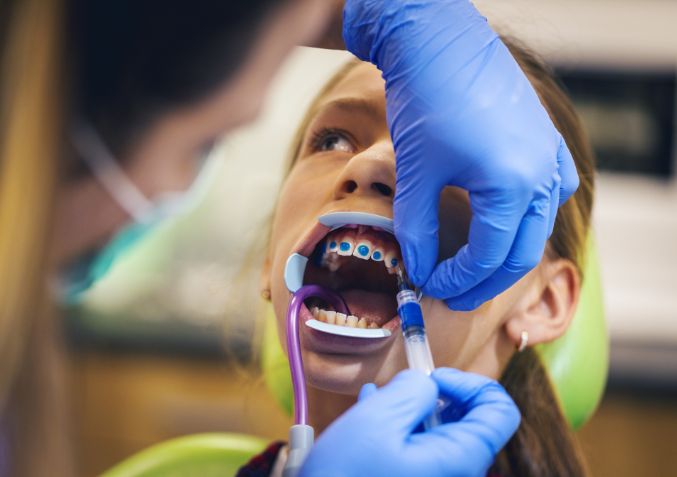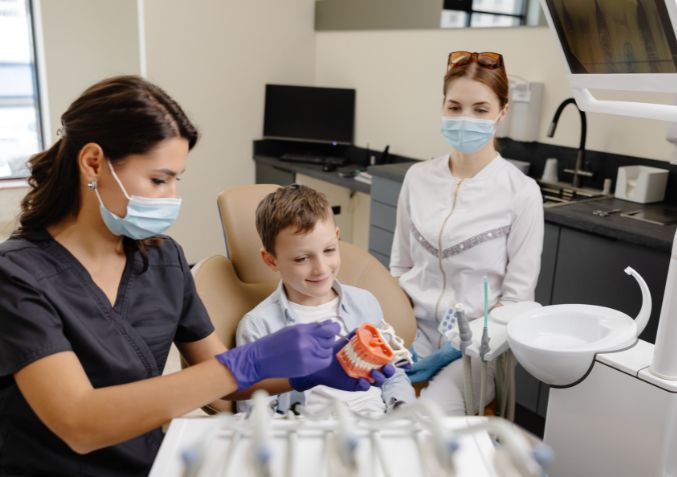Crowded teeth can affect both the function and appearance of a child’s smile. The good news is that early orthodontic care can help. As a parent, you may wonder how crowding is treated in early orthodontic treatment before adult teeth have come in.
The answer often involves gentle, proactive steps that guide jaw development and make space for teeth to align properly.
What Causes Crowding in Children?
Crowding can be caused by genetics, early loss of baby teeth, or habits like thumb sucking that affect jaw development. In many cases, it’s simply a matter of a small jaw and large teeth—not enough room for everything to fit.
An orthodontic evaluation around age 7 helps identify these issues before they become more complex. Even if all permanent teeth haven’t come in yet, early signs of crowding can be addressed during this stage.
Early Orthodontic Options for Crowding

Early treatment—also called Phase 1 orthodontics—focuses on creating a better environment for permanent teeth. It doesn’t always mean braces; the goal is to reduce or prevent more extensive treatment in the teen years.
Here are some of the common tools used to treat crowding early:
- Palatal Expanders: These devices widen the upper jaw, creating more room for teeth to come in naturally. They are most effective before the jaw stops growing.
- Space Maintainers: When baby teeth fall out too soon, nearby teeth can drift into the open space. Space maintainers hold that space open for the permanent tooth.
- Limited Braces or Aligners: In some cases, a few brackets or aligners can guide the growth of specific teeth and relieve mild to moderate crowding.
- Tooth Extraction (in certain cases): When overcrowding is severe, removing a baby tooth—or rarely, a permanent one—may help make room for healthy alignment.
Why Treat Crowding Early?
Addressing crowding at an early stage offers several advantages:
- Guides proper jaw and tooth development
- Improves facial symmetry and dental function
- Helps prevent future complications
- Builds a foundation for faster, easier treatment during adolescence
Early care also helps children feel more confident about their smile, which can make a big difference during formative years. To learn more about the advantages of early treatment, check out this article from the American Association of Orthodontics.
Thinking About Early Treatment? Let’s Talk.
If you’re wondering whether your child needs early orthodontic care, Dr. Murray Orthodontics is here to help. We offer free consultations and a warm, kid-friendly environment that puts families at ease.
Contact us today to schedule your child’s first orthodontic evaluation. Then, take the first step toward a future full of confident smiles.
FAQs: Treating Crowded Teeth in Early Orthodontics
Why is it important to treat crowded teeth early?
Addressing the issue early can help avoid more invasive treatments down the road. Early orthodontic intervention allows the teeth and jaw to develop in better alignment. It also reduces the risk of future problems like gum disease, difficulty chewing, or speech issues.
Treating crowding early also supports long-term oral health and helps children feel more confident as their smile grows.
What causes crowding in children’s teeth?
Crowded teeth can result from a small jaw, genetics, thumb sucking, or premature loss of baby teeth. These factors affect how permanent teeth come in and whether there’s enough room for them to align properly. A timely evaluation ensures the issue doesn’t become more severe as the child grows.
What types of appliances are used to treat early crowding?
Treatment plans are customized based on your child’s needs. Common types of appliances include palatal expanders to widen the jaw and space maintainers to hold room for adult teeth.
Is early orthodontic care recommended by professionals?
Yes. The American Association of Orthodontists recommends that children have their first orthodontic checkup by age 7. At this age, an orthodontist can assess the need for early intervention and begin a personalized treatment plan. This usually makes future care shorter and simpler.
How does early orthodontic treatment affect long-term oral health?
Creating enough space for teeth to grow properly helps children maintain good oral hygiene. It’s much easier to brush and floss aligned teeth.
Early orthodontic treatment can also reduce the likelihood of gum disease, cavities, and jaw strain later in life. Early care lays the foundation for a healthier, more beautiful smile as your child grows.

